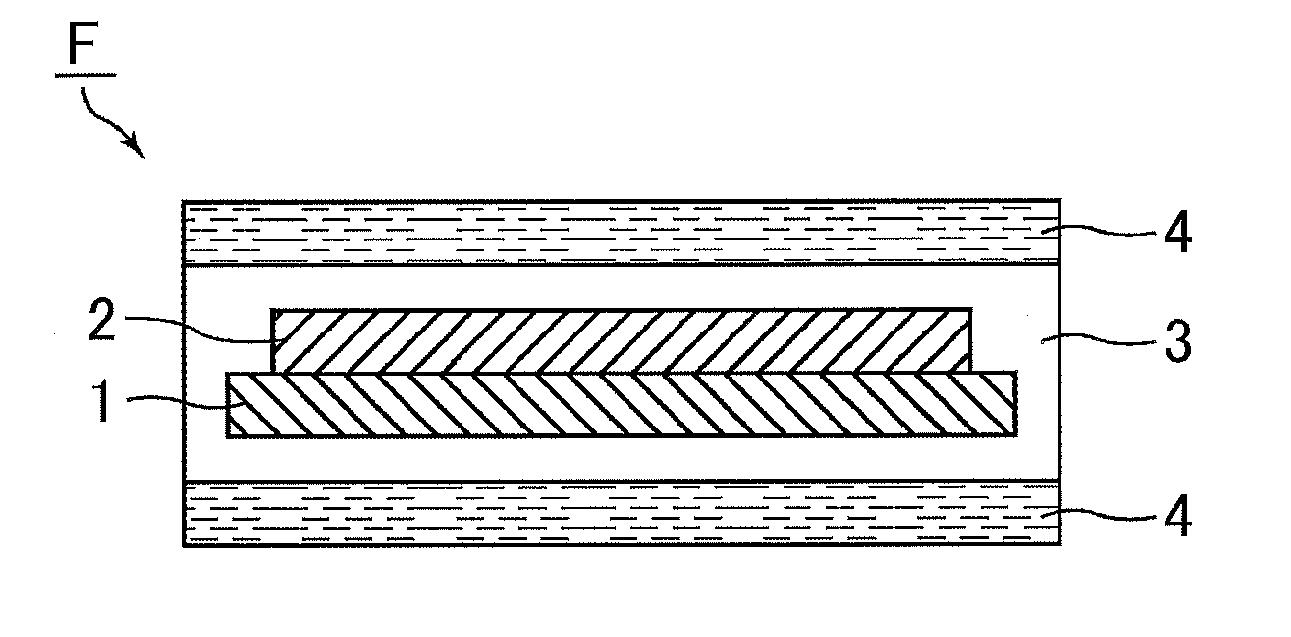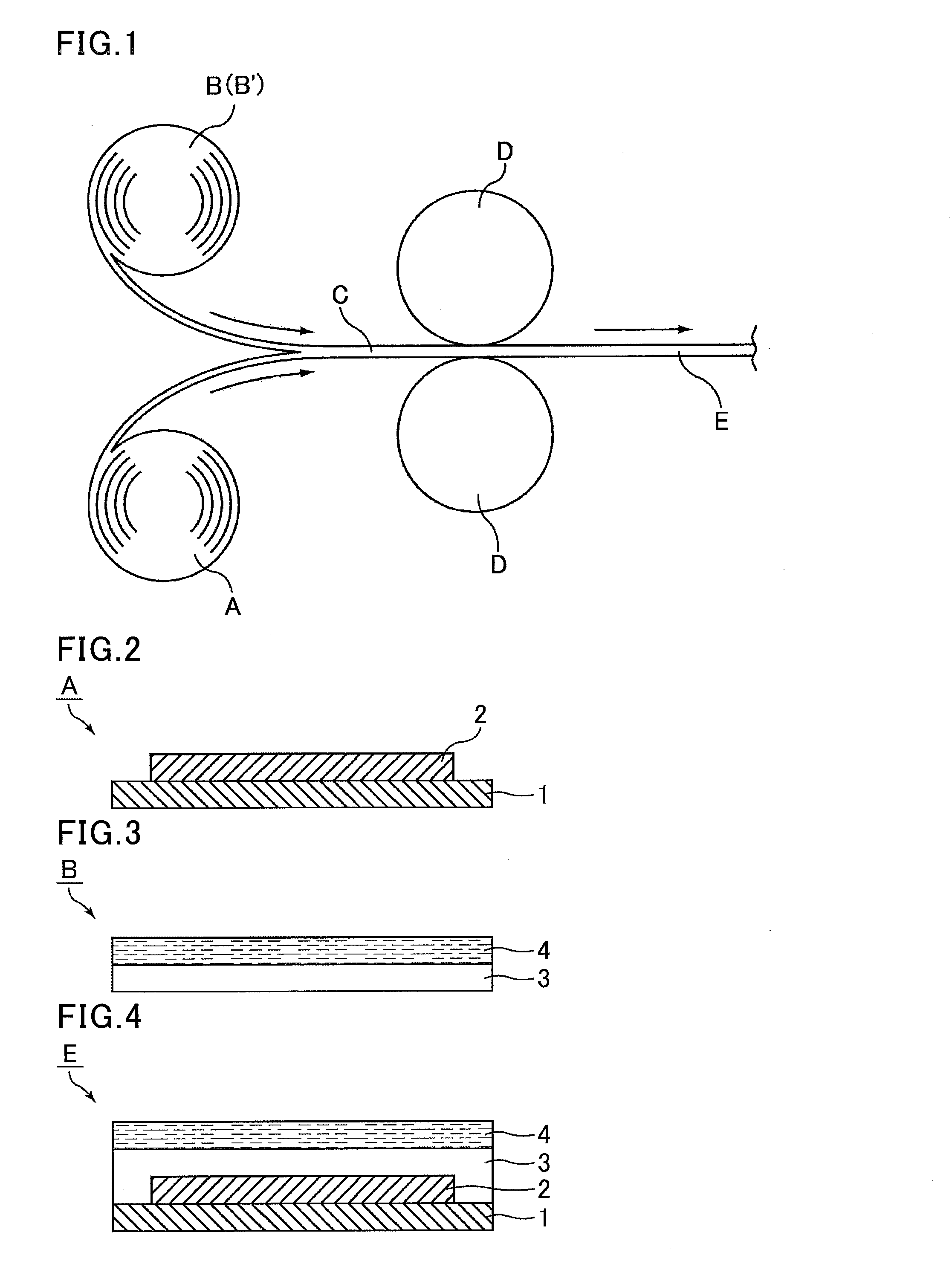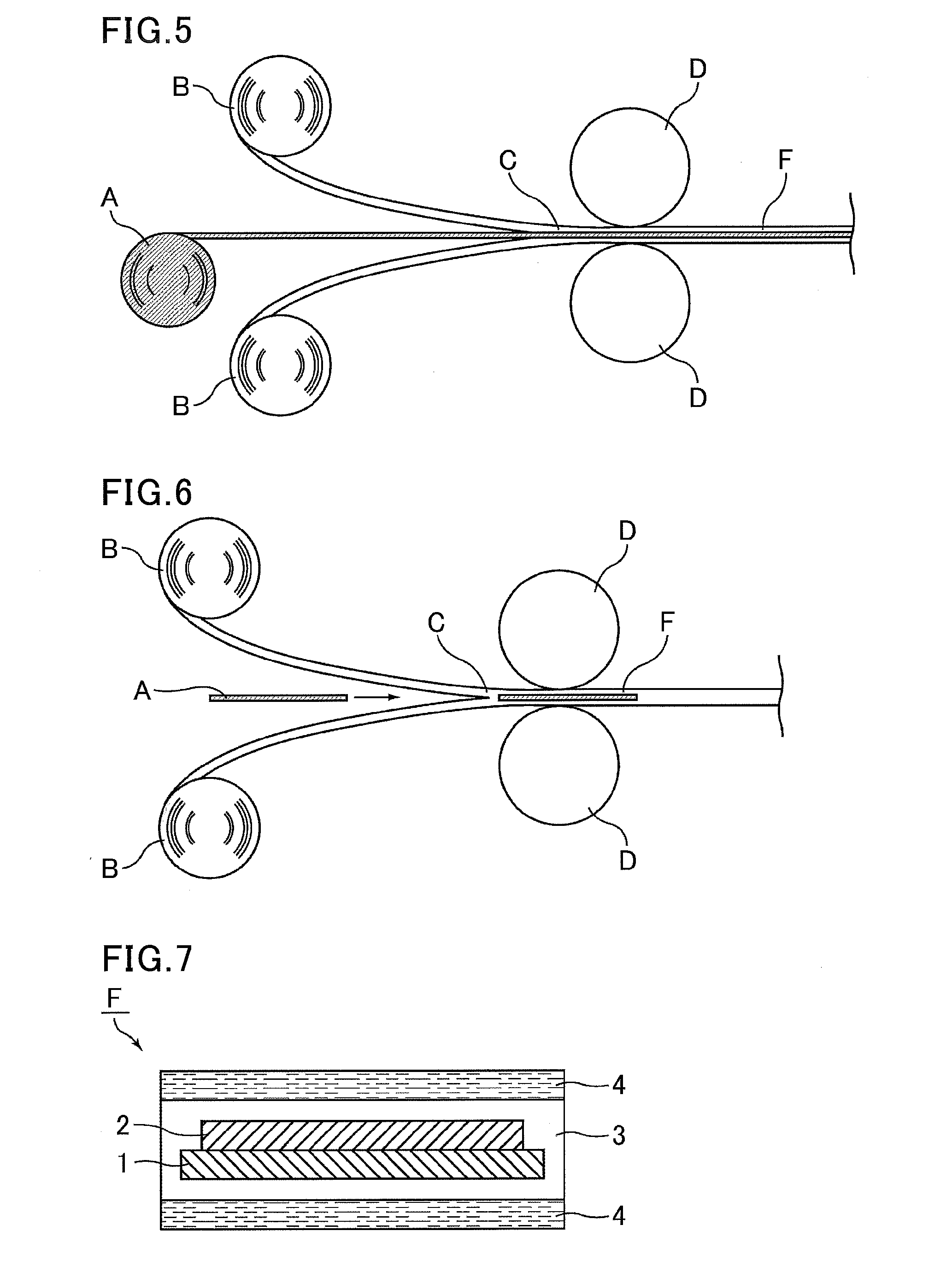Manufacturing method for flexible solar cell modules
a solar cell and manufacturing method technology, applied in semiconductor/solid-state device manufacturing, electrical equipment, semiconductor devices, etc., can solve the problems of long time to finish bonding, use of eva resins, and extended production time and acid generation
- Summary
- Abstract
- Description
- Claims
- Application Information
AI Technical Summary
Benefits of technology
Problems solved by technology
Method used
Image
Examples
examples 1 to 3
[0117]A silane-modified polyolefin resin (A) (100 parts by weight) having a predetermined α-olefin content shown in Table 1 was molten and kneaded in a first extruder at 230° C. Separately, a fluoropolymer shown in Table 1 was molten and kneaded in a second extruder at 230° C. The molten silane-modified polyolefin resin (A) and fluoropolymer were supplied to a coalescent die connecting the first extruder and the second extruder where the resins were contacted, and then the resins were extruded from a T die connected to the coalescent die into a sheet. In this manner, a long solar cell encapsulant sheet of a predetermined width was obtained as an integrated laminate which consisted of a 0.3 mm-thick adhesive layer and a 0.03 mm-thick fluoropolymer sheet.
[0118]Table 1 shows the modifying silane amounts, the melt flow rates (MFR), the maximum peak temperatures (Tm) determined from endothermic curves obtained by differential scanning calorimetry analysis, and the viscoelastic storage mo...
examples 4 and 5
[0122]A flexible solar cell module was formed in the same manner as in Example 1, except that 100 parts by weight of a resin mixture of predetermined ratios of a predetermined silane-modified polyolefin resin (A) and a polyolefin resin (B) shown in Table 1 was used instead of using 100 parts by weight of the silane-modified polyolefin resin (A). Table 1 shows the MFR, Tm, and viscoelastic storage moduli at 30° C. and 100° C. of the resin mixtures.
PUM
 Login to View More
Login to View More Abstract
Description
Claims
Application Information
 Login to View More
Login to View More - R&D
- Intellectual Property
- Life Sciences
- Materials
- Tech Scout
- Unparalleled Data Quality
- Higher Quality Content
- 60% Fewer Hallucinations
Browse by: Latest US Patents, China's latest patents, Technical Efficacy Thesaurus, Application Domain, Technology Topic, Popular Technical Reports.
© 2025 PatSnap. All rights reserved.Legal|Privacy policy|Modern Slavery Act Transparency Statement|Sitemap|About US| Contact US: help@patsnap.com



